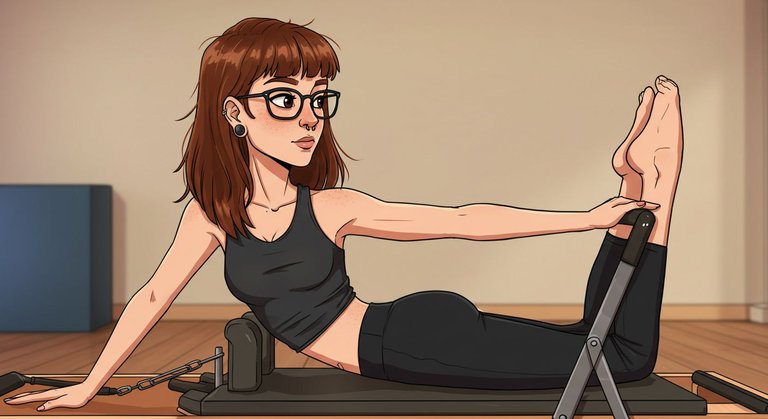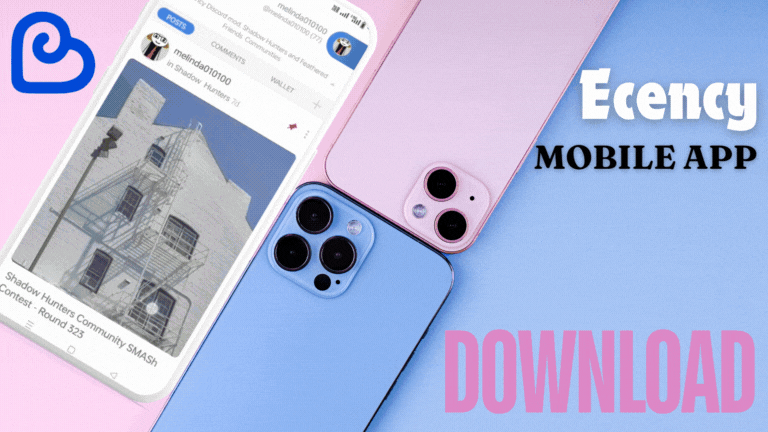When medication wasn’t enough, Pilates helped [EN/PT]

[EN]
For a long time, I believed that any health problem had to be solved with medication. Feeling pain? Take a painkiller. Got inflammation? Pop an anti-inflammatory. And that’s how I kept pushing the pain away — especially in my knees. But there came a point when I realized I couldn’t go on like that. Medication only masked the pain for a while, but it always came back — worse. That’s when I started paying more attention to my body — and to what it was trying to tell me.
I have patellar chondromalacia and a meniscal injury, two conditions that affect the knee and cause a lot of pain and limitations. Climbing stairs, squatting, going for a walk… all those simple things started becoming a challenge. And it wasn’t just physical — it took a toll on my emotional health too. The feeling of helplessness and being “broken” is incredibly frustrating. I even thought I’d have to live with this forever. Until I decided to try something different: Pilates.
At first, I’ll admit, I was skeptical. I thought, “How can slow exercises, deep breathing, and body stretches fix a real and painful problem in my knee?” But I went anyway. I had heard good things, knew it was a safe practice that respected the body’s limits, and, above all, I was tired of relying on medication just to walk normally.
Right from the first few sessions, I realized that Pilates wasn’t just that calm and zen thing people imagine. It’s a full-body workout, but in a different way. It focuses on breathing, strengthening deep muscles, and controlling movement. And that makes a huge difference. The exercises are tailored to my condition, always with great care not to strain the knee in the wrong way. Over time, I noticed real strength building in my legs, especially in muscles that support the knee — muscles I didn’t even know I had.
Today, Pilates is part of my routine — and my recovery. The pain is almost gone, my body feels more stable, more aware, and I feel more in tune with myself. Things that used to feel impossible (like squatting or climbing stairs without that sharp, uncomfortable twinge) now happen much more smoothly. Of course, it’s not magic. I still have limitations, I still need to take care of myself and respect my boundaries, but the improvement has been so significant that, honestly, no medication came close to delivering the same results.
Beyond the physical benefits, Pilates helped me in other ways too. It forced me to slow down, to pay attention to my breathing, my posture, and even the way I move throughout the day. These are things we don’t usually notice, but they directly affect pain and recovery. It felt like a re-education — for both body and mind. And as a bonus, I gained mental well-being too — something we all need, especially in such fast-paced and stressful times.
Looking at my health with more responsibility and care made all the difference. Today, I understand that not everything can be fixed with a pill. Sometimes, what the body really needs is daily care, mindful movement, and small habit changes that, together, make a powerful impact. And that applies to everything — not just knee problems. Whether it’s anxiety, chronic pain, insomnia, lack of energy… so much improves when we change our lifestyle.
If I could give one piece of advice to someone going through something similar, it would be: listen to your body. And, if you can, give Pilates a try. It might seem too simple — but that’s exactly the beauty of it.
All the content, pics and editions are of my authorship.
Written in PT-BR. Translated to EN-US using ChatGPT.
Cover: created by ImageFX.

Durante muito tempo, eu achei que qualquer problema de saúde precisava ser resolvido com remédio. Sentiu dor? Toma um analgésico. Ficou com alguma inflamação? Enfia um anti-inflamatório. E assim fui empurrando as dores, principalmente no joelho. Mas chegou um ponto em que eu percebi que não dava mais para continuar assim. Os medicamentos só mascaravam a dor por um tempo, mas ela sempre voltava, pior. Foi quando comecei a olhar com mais carinho para o meu corpo — e para o que ele estava tentando me dizer.
Tenho condromalácia patelar e uma lesão meniscal, duas condições que atingem o joelho e causam bastante dor e limitação. Subir escadas, agachar, fazer caminhada... tudo isso, que antes era simples, começou a virar um desafio. E não era só físico — também mexe com o emocional. A sensação de impotência e de estar “quebrada” é frustrante. Cheguei a pensar que isso seria algo com que eu teria que conviver pra sempre. Até que resolvi tentar algo diferente: pilates.
No começo, confesso que fui meio cética. Pensei: “como que uns exercícios lentos, respirando fundo e alongando o corpo, vão resolver um problema físico real e doloroso no meu joelho?” Mas fui mesmo assim. Tinha ouvido relatos positivos, vi que era uma atividade segura e que respeitava os limites do corpo, e, acima de tudo, eu não aguentava mais depender de remédio pra conseguir andar normalmente.
Logo nas primeiras aulas, percebi que o pilates não era só aquele negócio tranquilo e zen como muitas pessoas imaginam. É uma atividade intensa, mas de uma forma diferente. Trabalha o corpo como um todo, com foco na respiração, no fortalecimento dos músculos mais profundos, e no controle dos movimentos. E isso faz uma diferença absurda. Os exercícios são adaptados à minha condição, sempre com muito cuidado para não forçar o joelho de forma errada. Com o tempo, fui percebendo um fortalecimento real nas pernas, principalmente nos músculos que sustentam o joelho e que, antes, eu nem sabia que existiam.
Hoje, o pilates virou parte da minha rotina — e da minha recuperação. As dores praticamente sumiram, meu corpo está mais estável, mais consciente, e eu mesma estou mais conectada comigo. O que antes parecia impossível (como agachar ou subir uma escada sem sentir aquela fisgada incômoda) hoje já acontece com mais leveza. Claro que não é mágica. Ainda tenho limitações, ainda preciso me cuidar e respeitar meus limites, mas a melhora foi tão significativa que, sinceramente, nenhum remédio chegou perto de trazer esse resultado.
Além dos benefícios físicos, o pilates também me ajudou de outras formas. A prática me obrigou a desacelerar, prestar atenção na minha respiração, na minha postura, e até no jeito como eu me movo durante o dia. Coisas que a gente nem percebe, mas que influenciam diretamente na dor e na recuperação. Foi como uma reeducação do corpo e da mente. E, de quebra, ainda ganhei momentos de bem-estar mental — algo que todo mundo precisa, especialmente em tempos tão corridos e estressantes.
Olhar pra saúde com mais responsabilidade e carinho fez toda a diferença. Hoje, entendo que nem tudo se resolve com uma pílula. Às vezes, o que o corpo precisa é de cuidado diário, de movimento consciente, de pequenas mudanças de hábito que, somadas, fazem um efeito poderoso. E isso vale pra tudo — não só pra problemas no joelho. Seja ansiedade, dores crônicas, insônia, falta de disposição… muita coisa melhora quando a gente muda o estilo de vida.
Se eu pudesse dar um conselho pra quem está passando por algo parecido, seria: escute seu corpo. E, se tiver condições, experimente o pilates. Pode parecer simples demais, mas é justament
Todo o conteúdo, imagens e edições são de minha autoria.
Escrito em PT-BR. Traduzido para EN-US usando o ChatGPT.
Capa: criada com ImageFX.
Obrigado por promover a comunidade Hive-BR em suas postagens.
Vamos seguir fortalecendo a Hive
Sending Love and Ecency Curation Vote!
 Please Vote for our New Proposal! 🙏
Please Vote for our New Proposal! 🙏
Congratulations @xlety! You have completed the following achievement on the Hive blockchain And have been rewarded with New badge(s)
Your next target is to reach 34000 upvotes.
You can view your badges on your board and compare yourself to others in the Ranking
If you no longer want to receive notifications, reply to this comment with the word
STOPGood health without medicines is possible for only one reason, that is, we people have to change our routine and walk 10 kilometers every day, only then will we be able to improve our health, otherwise we will have to go to the doctors, then many benefits will start to come to our health.